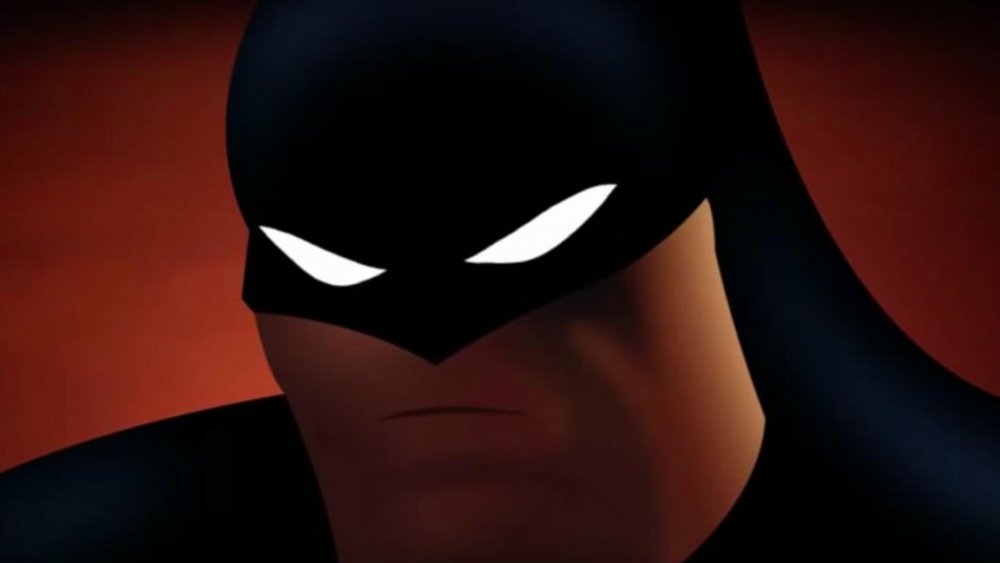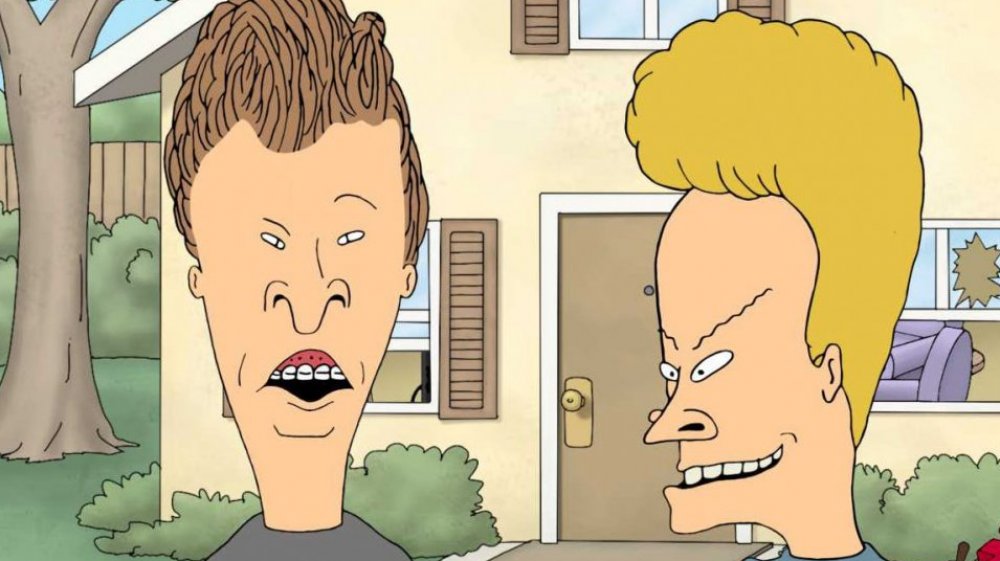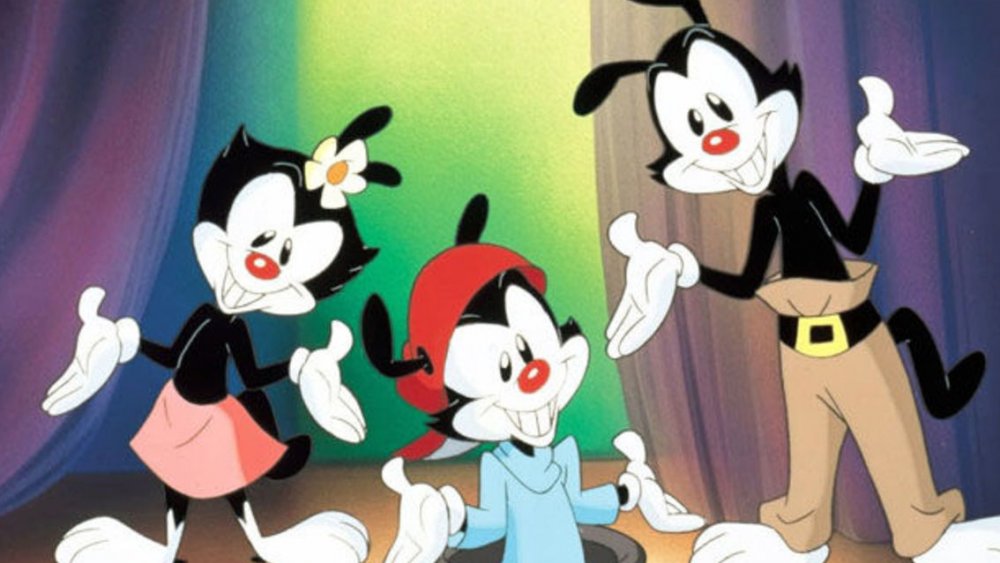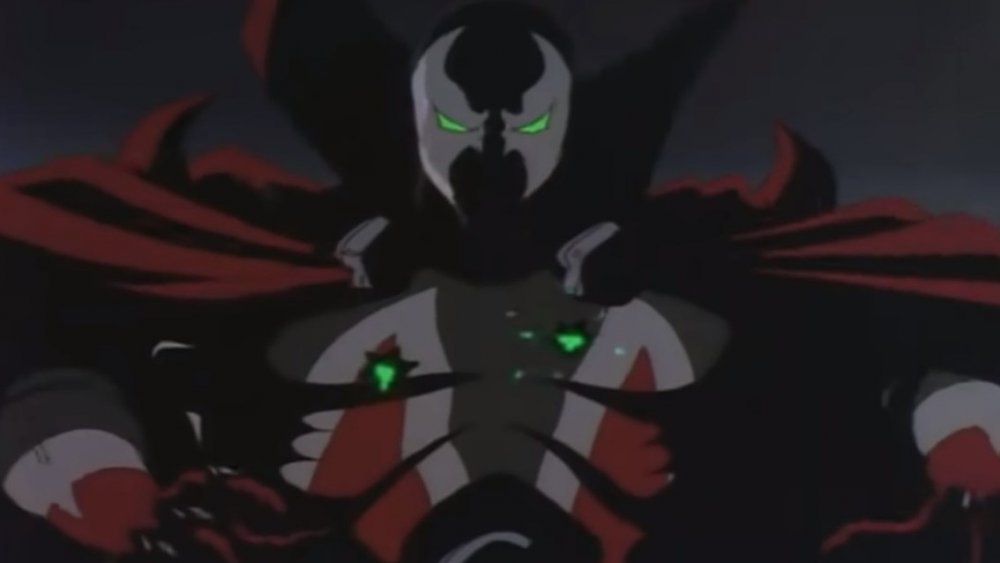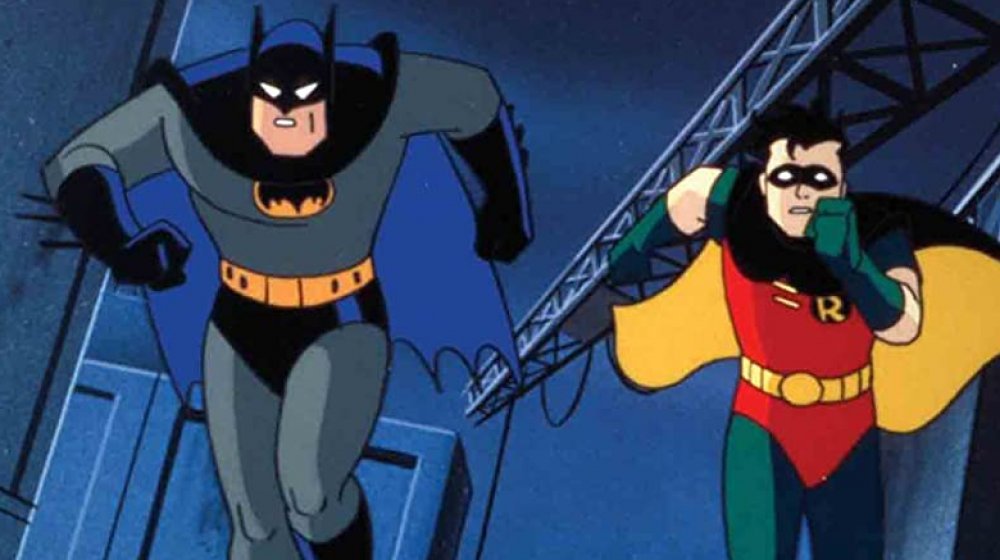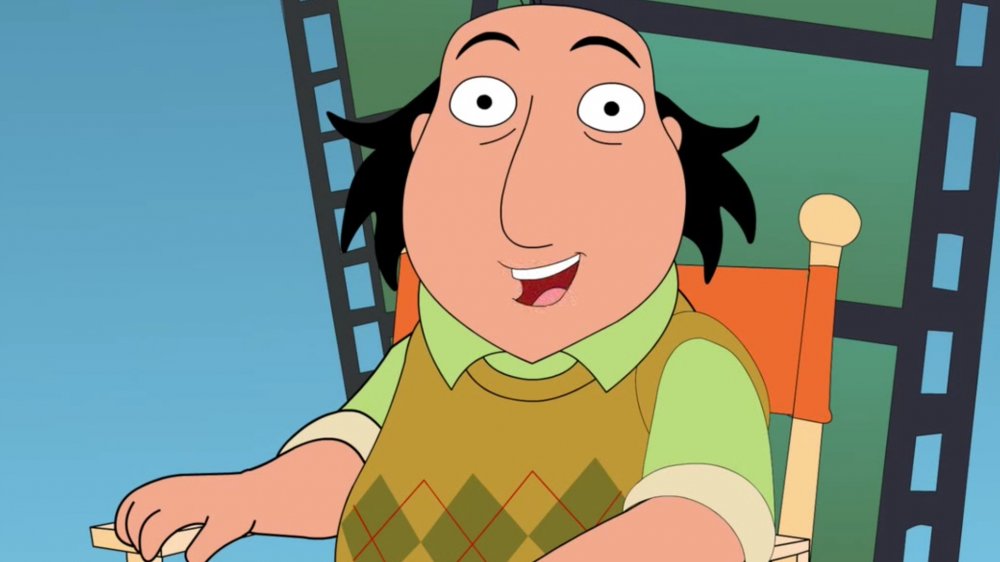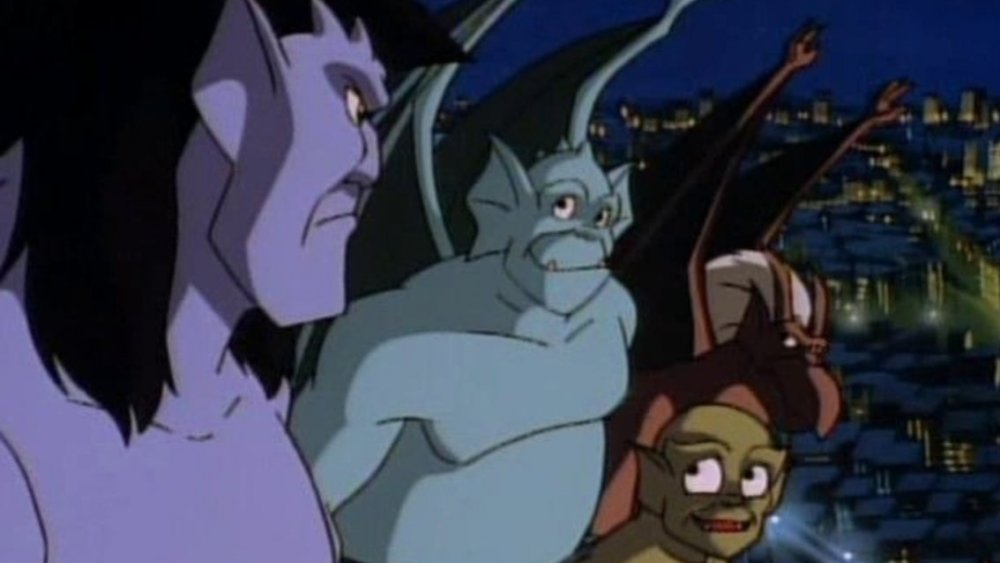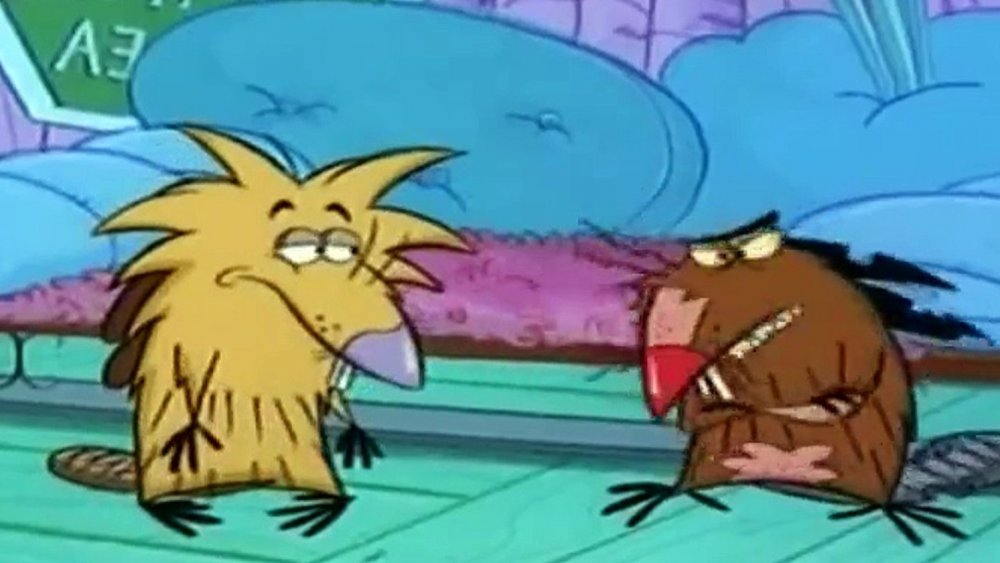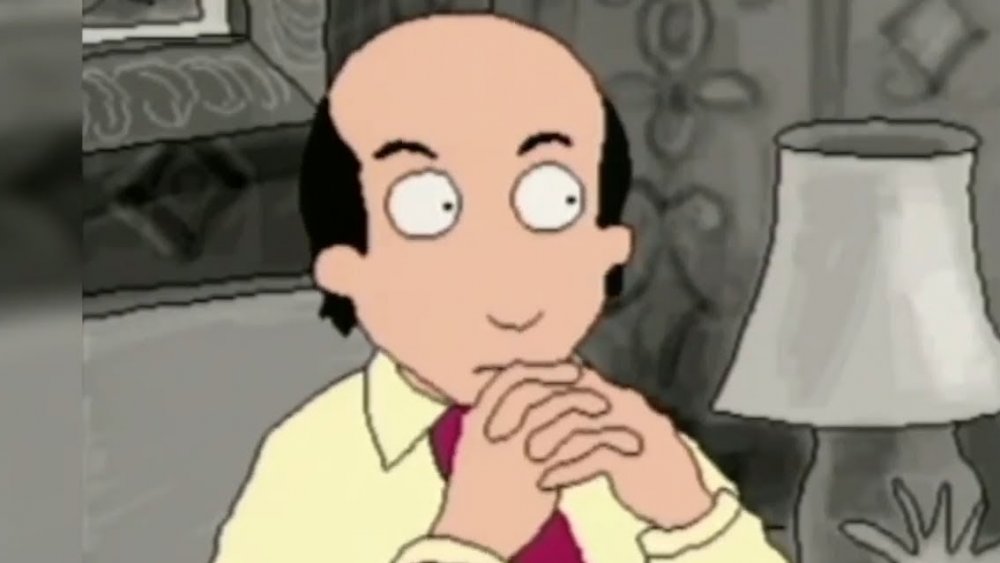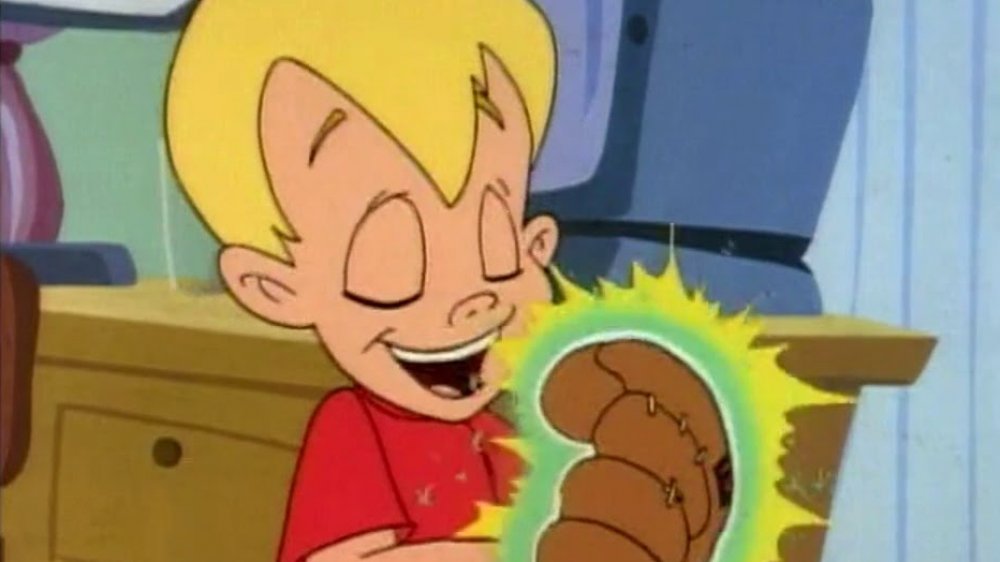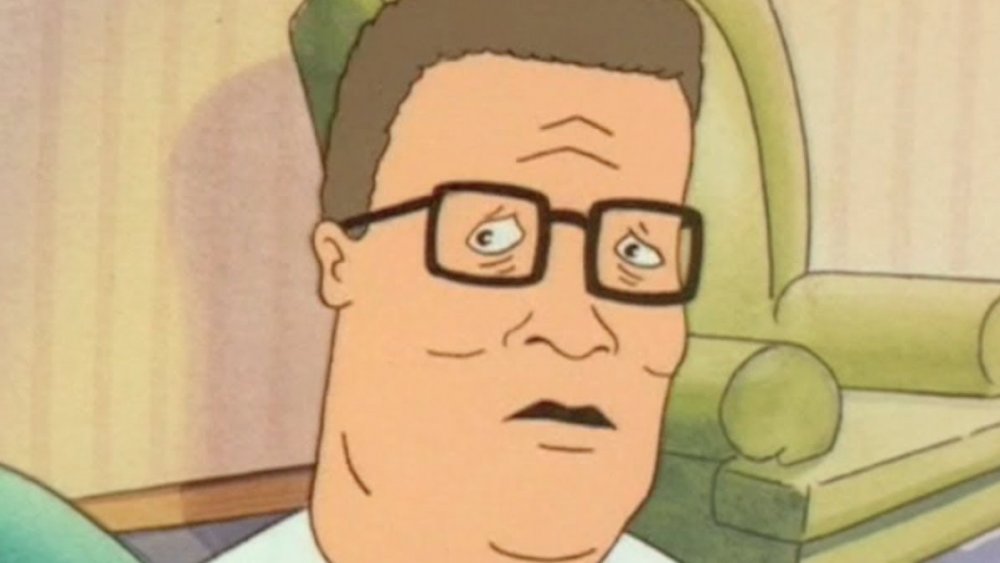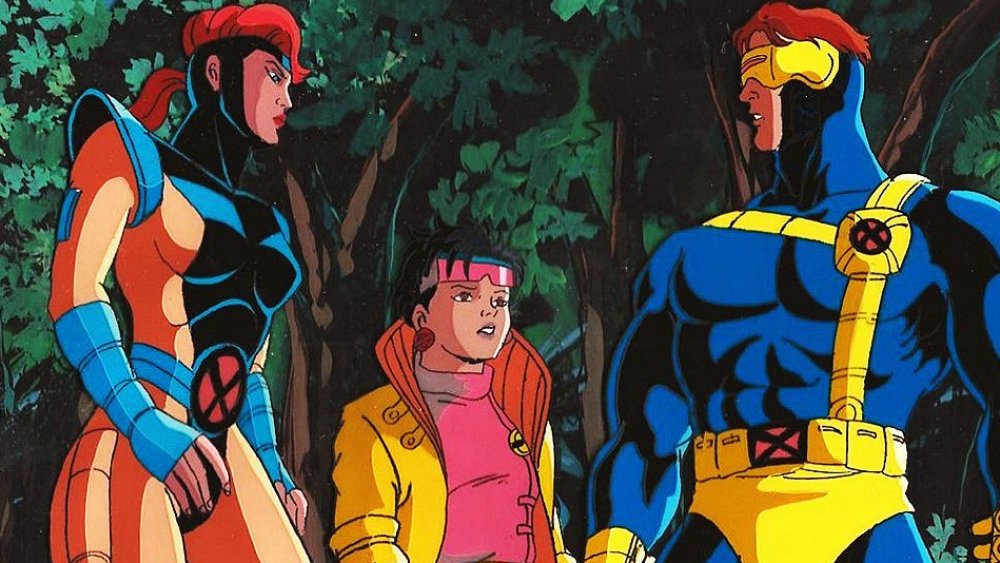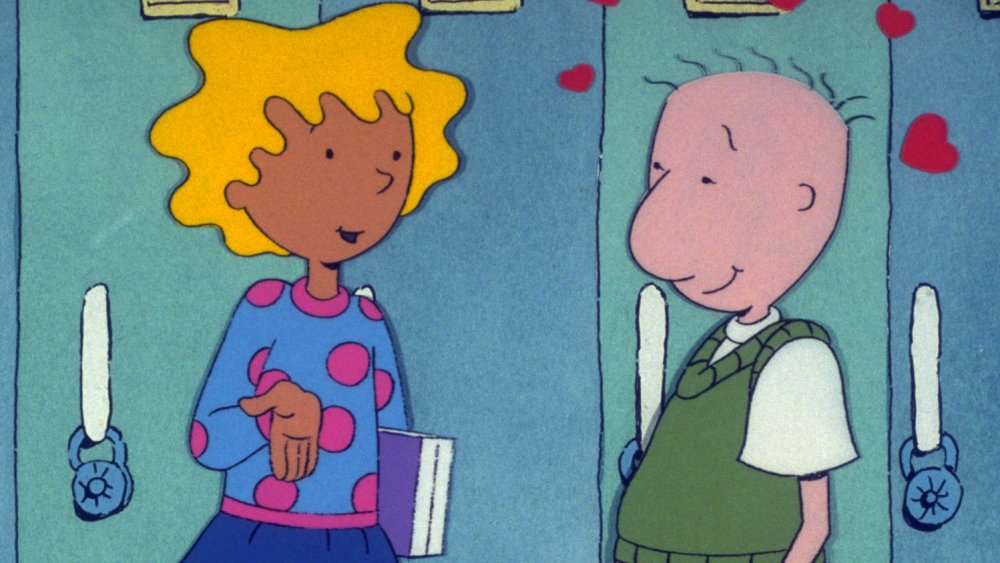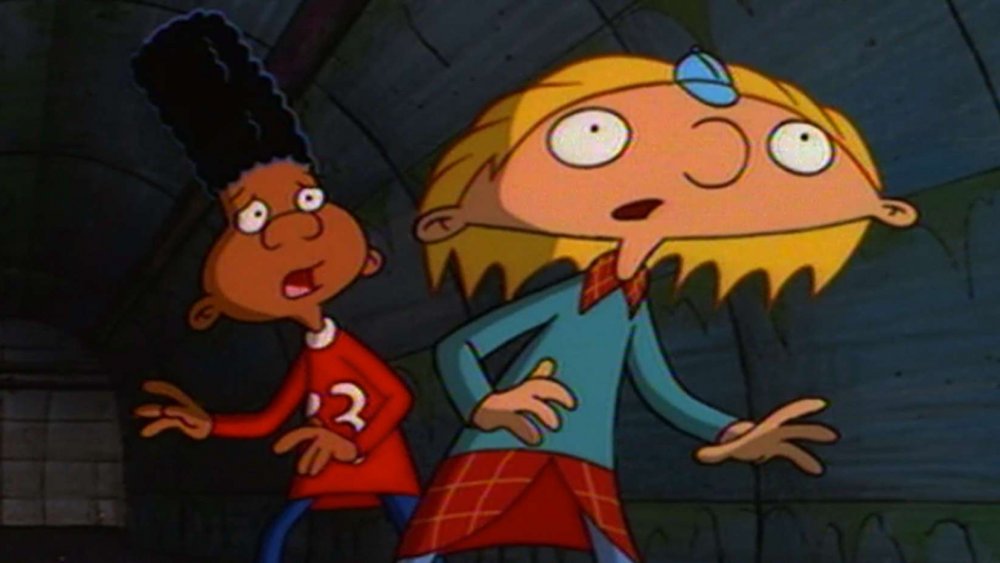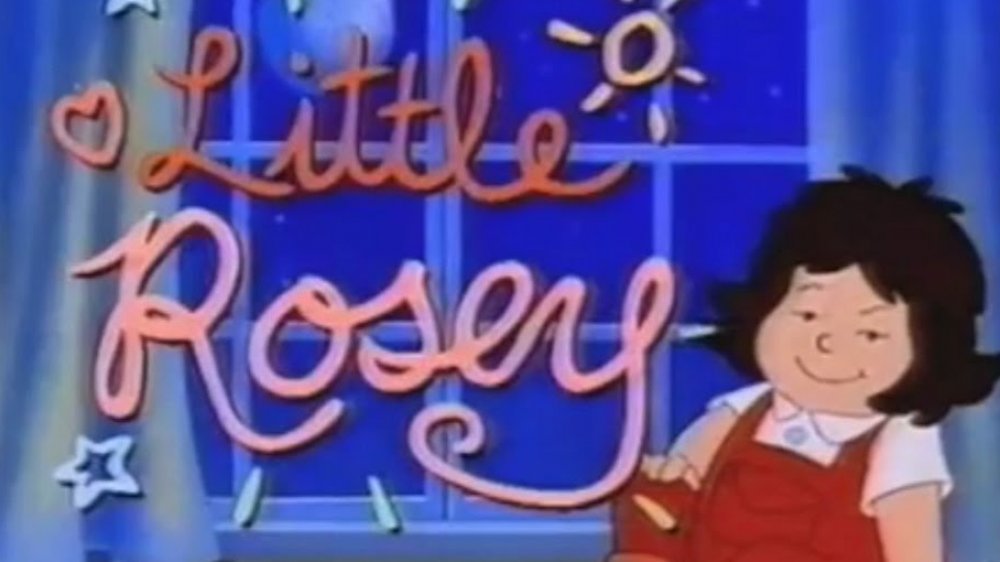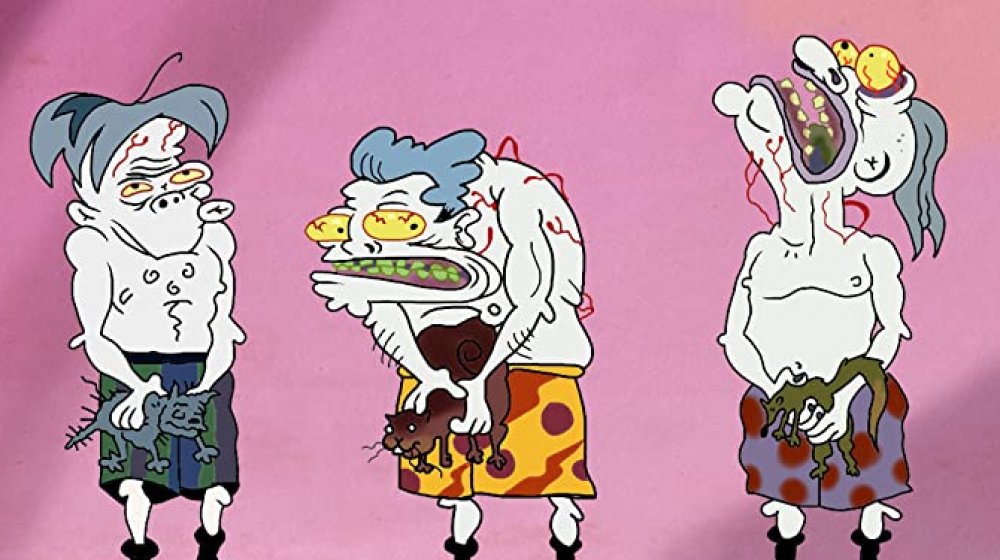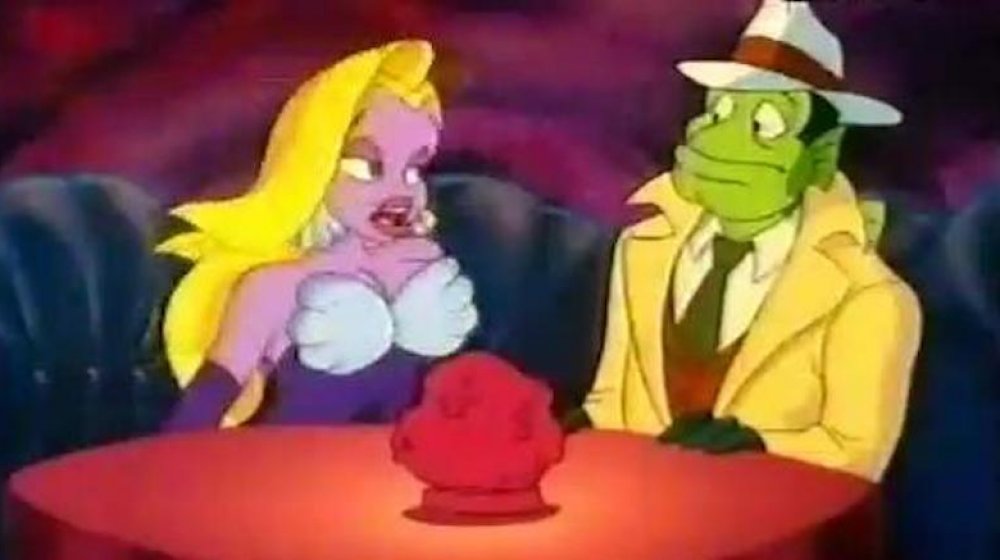The Real Reason These Popular '90s Cartoons Were Canceled
The '90s were a golden age of television animation. There were, suddenly, more places to watch cartoons than at any other point in TV history: Dedicated kids channels like Cartoon Network and Nickelodeon sprang into life, broadcast networks still aired cartoons on Saturday mornings, and after-school animation blocks like Fox Kids reigned supreme. Darkwing Duck, Tiny Toon Adventures, X-Men: The Animated Series, The Powerpuff Girls – there was a cartoon out there for everyone.
But like the rest of television, the realm of kiddie cartoons was a business — and a competitive one at that. There was a profit to be made from selling advertising on all those shows, churning out merchandise, and expanding into movie and video games. Networks, executives, and animators had to make tough decisions about what cartoons to keep, and what cartoons to kill. Many animated series, as a result, seemed to die early, much to the confusion of fans. Here are the reasons behind a few of those still-controversial cancellations.
Beavis and Butt-Head ran its course
Beavis and Butt-Head was a cultural phenomenon. After debuting on MTV in 1993, millions of kids and adults watched the two giggling, moronic metalheads determine what bands were "cool" and which "sucked," when they weren't terrorizing their neighbors, teachers, and Burger World customers. Not everybody liked Beavis and Butt-Head, of course: Politicians called out the show for encouraging antisocial behavior, and one family blamed Beavis's pyromania for leading to a deadly house fire. Nothing, however, stuck. Beavis and Butt-Head were the world's favorite idiots.
After 200 episodes and the big-screen Beavis and Butt-Head Do America, creator (and voice of both main characters) Mike Judge decided it was time to end it. "I actually wanted to stop a little sooner," he told the Los Angeles Times. "After the second season, I thought, 'How are we gonna do this anymore?' I was completely burned out." Judge stuck around for seven seasons, but in 1997 moved on to other projects, like his Fox animated series King of the Hill.
Pikachu killed Animaniacs
While most 1990s cartoons were ostensibly made with children in mind, some shows were so clever, referential, and sly that adults could absolutely love them as well. Perhaps no "kids" show was more popular with adults than Animaniacs, which follows the adventures of Yakko, Wakko, and Dot Warner, three old-timey cartoon characters more or less imprisoned in the water tower on the Warner Bros. movie lot. The Warner siblings satirize cartoon tropes while being completely self-aware, offering up innuendo-laced dialogue (followed by Yakko's catchphrase, "Goodnight, everybody!") and biting social commentary (episodes were given a point as an afterthought via "The Wheel of Morality").
Animanaics ran for five seasons and spun off its most popular side characters (laboratory mice Pinky and the Brain) before Kids WB killed the show in 1998. According to creator Tom Ruegger, the end came due to a definitively just-for-kids show and a very adult business decision. You see, Kids WB had acquired, very cheaply, the rights to a Japanese anime series with massive commercial potential. "Kids WB was handed Pokémon for free and it pulled down big numbers," Ruegger said in a Reddit "Ask Me Anything" Session, "so then they wanted everything for free." Animaniacs cost WB too much money to make and promote, so off it went.
Spawn didn't spawn other hits for HBO
To the majority of people, Todd McFarlane's Spawn looked like a show for kids. After all, this was 1997, when most animated content was produced for a juvenile audience. Plus, it was based on a popular comic, also widely considered a medium for kids and tweens. But Spawn was based off Todd McFarlane's top-selling comic series, an extremely dark and violent story about a former assassin who gets murdered, sent to Hell, and ends up working for Satan. Spawn wasn't anything anyone was ever intending to air between Totally Spies and Pokemon — as such, the cartoon adaptation was produced by HBO and aired late at night.
Spawn ran for three seasons and won an Emmy Award for Outstanding Animated Program. Spawn's third season was a bust, however, and HBO's animation division was withering on the vine. After enduring numerous production difficulties, the show earned a quiet cancellation in 1999. Thus ended Todd McFarlane's Spawn — well, until a Spawn reboot, anyway.
Batman: The Animated Series ended before it could decline
The first show focused on the Caped Crusader since cornball classic Batman left the air in 1968, Batman: The Animated Series represented a breakthrough in television animation and comic adaptation. Moody, quiet, and literally dark, it demonstrated that there was a market for dramatic superhero content that could appeal to children and adults. This Batman was so highly regarded that Fox aired the show in prime time for a while, and in 1993, released Batman: Mask of the Phantasm in theaters. Voice actor Kevin Conroy even tops lists of the best Batman actors.
In other words, Batman: The Animated Series was really good and nobody wanted to mess that up. But in 1995, after three years and 85 episodes, the series left the air. "They didn't stop making the shows because the audience wasn't there or the actors weren't there, they stopped, really, because the creators ran out of ideas for stories," Conroy revealed in 2018. "And they didn't want to compromise on the quality of what they had and start creating kind of silly stories." A wise decision for all involved — seeing this particular Batman jump the shark would have been truly devastating.
A Fox executive just didn't like The Critic
The Critic is an animated sitcom about a snobby, hapless New York City movie reviewer named Jay Sherman. He hates most movies he sees (Hollywood claptrap satirized in brief clips on his show, Coming Attractions), tries to raise his son as best he can, and fends off his wacky family. "We did it for ABC, and ABC goes, 'We love it!' And then they cancelled it after seven shows," Lovitz, the voice of Jay, told The AV Club. Thus it moved over to Fox and aired immediately after The Simpsons, where creators Al Jean and Mike Reiss had worked as writers and show runners.
According to Lovitz, The Critic brought in excellent ratings for Fox, retaining 90 percent of the huge Simpsons audience. And yet, in 1994, Fox pulled the plug. Despite a solid performance, an executive at the network thought the 8:30 p.m. Sunday time slot could be better utilized by taking a chance on a new show. "The guy who ran the network then, John Matoian, just didn't like the show," Jean told UGO. "He preferred a show that no one remembers called House of Buggin' with John Leguizamo." That sketch comedy show debuted in early 1995 in place of The Critic, and lasted a mere 10 episodes.
Gargoyles wasn't popular enough for Disney
After four seasons of silly cartoons and wacky adventures, the syndicated Disney Afternoon programming block mixed things up, adding Gargoyles to its lineup in the fall of 1994. This contemplative and sometimes violent show (in which characters shed actual blood) is stylistically different from its Disney Afternoon predecessors, like Goof Troop, TaleSpin, and DuckTales. Similar in tone and approach to Batman: The Animated Series, Gargoyles concerns the day-to-day activities of magical beings who protect New York City at night. Unlike Batman, however, they are architectural gargoyles by day, imbued with the spirits of 1,000-year-old Scottish folk creatures.
Gargoyles ran for three years and 78 episodes, and while that speaks to moderate popularity, creator Greg Weisman has said it was cancelled because it wasn't a mega-hit. "It didn't perform up to expectations," he said. "Disney really wanted it to outdo Mighty Morphin' Power Rangers, and it failed to succeed at that."
The Angry Beavers went out in a blaze of glory
Angry Beavers tells the story of two beaver bachelors named Dag and Norb who live in an Oregon forest. By 2001, four seasons had aired and cancellation seemed imminent. "We were significantly over budget, behind schedule, and had generally worn out our welcome," co-creator Keith Kaczorek told Vice. Realizing that the end was near and any attempts to churn out high-quality episodes on the cheap and on time would be too little too late, Kaczorek and the rest of the Angry Beavers staff decided to go out on a blaze of glory.
Kaczrorek and show staff writer Roger Eschbacher wrote a script for a series finale episode called "Bye Bye Beavers," an installment equal parts dark and meta. Dag and Norb come to realize that they are not real, but cartoons, and that their show is about to be canceled, which means they will cease to exist. Somehow, someway, Nickelodeon green lighted the script. "We got approval to do the episode, every step of the way," Angry Beavers writer Micah Wright told Vice. But when executives noticed all the jokes making fun of Nickelodeon, they reversed course. "They saw it all put together and said, 'Wait, this makes us look bad,' so they killed it," Wright explained. The script was never animated, but a recording of the show's voice actors reading it was made, which leaked online in 2006.
Not enough bros watched Dr. Katz
Upstart cable network Comedy Central spent most of the early 1990s as a dumping ground for pre-existing comedic material. Its daily lineup consisted largely of reruns of Saturday Night Live, The Kids in the Hall, and the original British version of Whose Line is it Anyway? By 1995, the channel was experimenting with original programming, and one of its first new shows was a low-budget animated series with largely improvised dialogue called Dr. Katz: Professional Therapist. Comedian Jonathan Katz voiced a therapist whose clients were all stand-up comedians, who'd lay on his couch and relate their neuroses (but were really just doing bits from their stage routines). He also had a lazy, adult son named Ben (voiced by future Archer and Bob's Burgers star H. Jon Benjamin) and attempted to have a social life.
Ironically, it's Dr. Katz's own success that led to its demise. The show helped put Comedy Central on the TV map, showing that the channel had a unique sensibility and was a home for animated TV. Two years after its debut, South Park debuted on Comedy Central and became a monster hit, particularly with young, male viewers. Dr. Katz attracted an older audience, and since it wasn't in the demographic that the now South Park-obsessed network was trying to lure, it got canceled.
NBC jettisoned all Saturday morning cartoons to make room for sports
With the arrival of child-friendly cable networks like Nickelodeon and the popularity of syndicated shows like He-Man and the Masters of the Universe, the ratings for Saturday morning cartoons — once just about the only thing on TV for kids — had started to slip. NBC president Brandon Tartikoff analyzed the budgets and found that the average Saturday morning cartoon cost $300,000 to produce. Tartikoff and his team realized that it would be much cheaper to get rid of the cartoons in favor of news shows or sports.
In 1991, NBC signed a long-term contract with Notre Dame to air the college's games on Saturday mornings. It cost the network about $1 million a game, which was still cheaper than programming six hours of cartoons every week, plus it could charge higher advertising rates for football than it could for kid stuff. In 1992, NBC did away with cartoons altogether in favor of a lineup of a Saturday edition of Today, football games, and a block of low-budget sitcoms like Saved by the Bell. That meant the entire 1991-1992 Saturday morning schedule was eliminated. Among these mass cancellations: Wish Kid (starring Macaulay Culkin), ProStars (in which Michael Jordan, Bo Jackson, and Wayne Gretzky become superheroes), Yo Yogi! (a '90s update of Yogi Bear), and the Nintendo-themed Captain N and the New Super Mario World. Alas, poor cartoons — we never really got the chance to know you well.
King of the Hill was toppled in the name of Cleveland
In the 1990s, Fox became the only place on broadcast TV where primetime animation could find an audience and flourish creatively. After the success of The Simpsons, the network debuted another, very different show about a cartoon family in early 1997: King of the Hill. Created by Beavis and Butt-Head mastermind Mike Judge, the low-key but hilarious series centered on Hank Hill, an extremely uptight family man from the town of Arlen, Texas, who loved beer, football, selling propane and propane accessories, struggling to relate to his weird tween son Bobby. King of the Hill earned all kinds of Emmy attention and was such a consistent hit with viewers that it stayed on the Fox lineup for well over a decade. But after 259 episodes, King of the Hill was out of gas. Its last episode, "To Sirloin with Love," poignantly featured Hank and Bobby finally bonding over a shared love of grilling, and it aired just before the start of the 2009-2010 TV season. King of the Hill, which helped further popularize network cartoons, ironically was forced to step aside for a new animated series. Shortly after Fox announced its final order of King of the Hill episodes, it gave a full season pickup to The Cleveland Show, a spinoff of the hit cartoon Family Guy.
X-Men
Before a dozen movies over the course of 20 years, millions of Americans (kids, mostly) saw Professor Xavier's uncanny crew of superpowered mutants for the first time on Fox's Saturday morning staple X-Men: The Animated Series. Based on the Marvel comics that date back to the '60s, but using original stories, the action-packed cartoon focused on a select handful of the franchise's vast character base — Cyclops, Rogue, Storm, The Beast, Gambit, Jubilee, Jean Grey, Magneto and his bad mutants, and, of course Wolverine. Unlike most other kid-oriented cartoons of the '90s, X-Men was mostly serialized, with viewers required to turn in each week to see how multi-part storylines played out.
X-Men debuted in Fox primetime in 1992 before moving to its weekend morning time slot, which it held until 1997. That's actually a bit longer than the network or producers had initially envisioned. It was supposed to run 65 episodes (a standard production run for an animated show in the '90s), but Fox ultimately wanted a total of 76. However, in its fifth and final season, the production environment changed. "Some of the quality controls were lifted," creator and showrunner Eric Lewald told The Hollywood Reporter. "The budgets went down. They were cranked down." When the 76 episodes were finished, so was X-Men. "When it was done, it was like, 'well, contract fulfilled. We did it," producer Will Meuginot said.
Doug went Disney
Doug was among the first Nicktoons in 1991, and also one of the sweetest and most gentle cartoons of its era. It was told from the point of view of awkward tween Doug Funnie, who makes up for his painful shyness with a wildly active fantasy life. The kid unabashedly loved a few things: his crush Patty Mayonnaise, his cool best friend Skeeter, his dog Pork Chop, and the band the Beets, best known for the hit "Killer Tofu."
Nickelodeon ended production on Doug in 1994, and soon after Disney purchased ABC and launched the House of Mouse-branded "One Saturday Morning" programming block. According to Doug creator Jim Jinkins, Disney aggressively pursued his animation studio, Jumbo Pictures, because it wanted Doug. "So, should I stay with Nickelodeon, who is through with me... or get bought by Disney, where we get to create 65 new half hours of Doug, a feature-length movie, Doug Live! for their theme park, toys, books, additional funding for development and production on many new series?" Jinkins asked rhetorically in Slimed: An Oral History of Nickelodeon's Golden Age. In 1996, Brand Spanking New Doug hit ABC. Focused on the business of Doug, Jinkins wasn't around the production as much to maintain quality, and the show may have gone downhill when others stepped in. "Doug suffered when it changed to Disney because of network intervention," casting director Wendy Litwack said. The new Doug came to a conclusion at the end of its third season, followed by a big-screen movie.
Hey Arnold! flopped on the big screen, ended on the small screen
Hey Arnold! joined the Nicktoons lineup in 1996, and quickly became one of Nickelodeon's most popular and enduring shows. For five seasons, millennials absorbed the adventures of a group of independently minded city kids, including football-headed Arnold, his best friend Gerald, complicated lovelorn bully Helga, and "Stoop Kid," the kid who wouldn't leave his stoop. Nickelodeon renewed Hey Arnold! in 1998, and also ordered a feature film, which Bartlett began working on after the fifth season, a straight-to-video project called Arnold Saves the Neighborhood. However, Nickelodeon had experienced such success with its theatrical films based on TV characters (particularly the two Rugrats features) that it released Arnold Saves the Neighborhood to multiplexes as Hey Arnold! The Movie. Unlike Rugrats, this Nick movie flopped in 2002, both with critics and audiences — it earned just $13 million at the American box office. That marked the end of Hey Arnold! in any form, and hanging plot points weren't resolved until creator Craig Bartlett returned to Nickelodeon to produce the made-for-TV Hey Arnold: The Jungle Movie in 2016.
Big drama invaded Little Rosey
Roseanne Barr ruled ABC in the late '80s and early '90s. The sitcom based on her stand-up comedy act, Roseanne, finished the 1989-90 season as the #1 show on network TV, and in the fall of 1990, the network moved to capitalize on her popularity with a Barr show just for kids: a Saturday morning cartoon called Little Rosey. It hopped on a trend then popular in cartoons, of taking familiar characters and depicting them as children, resulting in fare like Muppet Babies, The Flintstone Kids, and A Pup Named Scooby-Doo. Little Rosey wasn't quite "Roseanne Babies," however — it was about an eight-year-old version of Barr named Little Rosey, her Dan Conner-like best pal Buddy, and her sister Tess (a stand-in for Roseanne's Jackie). Nobody from Roseanne voiced their animated kiddie counterparts — not even Barr. ABC tried to interfere with the production early on, requesting that Rosey's friend group include more boys. A difficult show to make, combined with not-great ratings, made Little Rosey a one-season wonder.
The Brothers Grunt was a failed experiment
MTV was a fruitful place for animation in the '90s, what with the cartoon anthology Liquid Television, the success of Beavis and Butt-Head, and plenty of bizarre and imaginative station identification segments, or bumpers, produced by leading and cutting-edge animators. One of the more memorable ones was a 10-second piece depicting a succession of grotesque male characters painfully straining and grunting, at the end of which an MTV logo drops into murky water (with an audible sigh of relief). That was the creation of animator Danny Antonucci, who called it "Grunt MTV," for obvious reasons.
Despite (or probably because of) its scatological nature, it was popular enough that MTV wanted more — lots more. "[MTV executive] Abby Terkuhle called up and said, 'hey, can we make a series out of this?'" Antonucci recalled to A Living Dog. He jumped at the chance to make "the most absurd and bizarre" TV series possible. In 1994, The Brothers Grunt debuted its first of 45 segments. Terkuhle had been wrong, however, and the attempt to turn a short cartoon into a long one failed — It was not the spiritual successor to Beavis and Butt-Head, and was canceled after one season. As Antonucci put it, "The Grunts didn't really do too well."
Fish Police tried to swim upstream from TGIF
Two big phenomena breathed new life and young blood into primetime broadcast television in the early 1990s: mature animation and family-friendly programming blocks. The success of The Simpsons on Fox led the other big networks to give a try to cartoons at night that appealed to adults, something that — prior to The Simpsons — hadn't really worked since The Flintstones went off the air in 1966. Nobody could really touch Homer, Marge, and the gang — ABC's mouse-based political satire Capitol Critters bit the dust after seven episodes, while CBS's Fish Police lasted for just six installments. Based on a relatively obscure comic book of the same name, Fish Police was set in an underwater world riddled with crime, an old-timey detective noir show but loaded with terrible sea life puns. (For example: characters were named "Inspector Gil" and "Biscotti Calamari.") CBS scheduled Fish Police on Friday nights in the middle of the 1991-'92 season, the second half of a supposedly kid-friendly block, following Scorch, an ALF clone about an ancient dragon, portrayed by a puppet. CBS's offerings just couldn't compete with ABC's Friday night "TGIF" lineup of family sitcoms like Full House and Family Matters.
